Keith Sisman Ramsey church of Christ, England - Traces of the Kingdom

Gal 3:26 For ye are all the children of God by faith in Christ Jesus.
One of the most famous preachers of the time for the Lord's Church was Henry Denne (died 1661). Denne was educated at Cambridge University. He was ordained by the Bishop of St. David's, Wales about the year 1630, becoming a minister in the church of England. He became the minister at Pryton (Pirton), Hertfordshire. He stayed there about ten years. Henry Denne was at first Calvinistic but later changed to what was then termed incorrectly 'Arminian' doctrine, therefore of the opinion that "all men were put into the possibility of salvation through Christ" and "those that choose to perish do so at their own choice". He became disillusioned with the CoE, rejecting Calvinism and infant baptism.
In 1641 Denne preached a sermon at Baldock,a short distance from Pryton. He here exposed the evils of the established church, his text being John 5:35. He focussed on the pride and covetousness of the clergy, their pluralities, neglect of duty by non-residence, a common problem in that era and other evils, he demanded restoration speaking against conformity. He said, I must call upon those in authority, to make diligent search after these foxes. If the courts had been so vigilant to find out these as nonconformable ministers, surely by this time the church would have been as free from them, as the land from wolves. But they have preferred the traditions of men before the commandments of Almighty God. I tell you that conformity hath ever sped the worse for their sakes, who breaking the commandments of God think to make amends with conformity to the traditions of men".
After preaching at the "visitation" at Baldock he realised he could no longer stay within the established Church (Church of England).
He came into contact with Thomas Lamb, the preacher of the Bell Alley church of Christ, Coleman Street, London. He resigned from the Church of England and hence his 'living' at Pirton, and immediately became a travelling evangelist, working with and establishing congregations in Staffordshire, Cambridgeshire, Huntingdonshire, Lincolnshire, Kent and other places. A close friend objected to his new religion and Denne was arrested at Cambridge. His crime was preaching against infant baptism, he was sent to jail at Bishopsgate, London. During his time in prison he met Dr Featly, famous for his book called the 'Dippers Dipt; or the Anabaptists duck'd, and plunged over head and ears, at a disputation in Southwark'. Dr Featly, when realising the nature of the opposition declined any debate.
After being released from prison Denne became the preacher at Eltisley, about fifteen miles from Cambridge. During 1646 Denne was arrested again at Spalding, Lincolnshire for preaching and baptising by immersion. Now broke with little money and with the country in civil war, he entered the army (parliamentary side) and served several years as a captain (Cornet). We do not know if he saw any fighting. In May 1649 he took part in a mutiny, occasioned by his fellows soldiers lack of ambition concerning the campaign to Ireland and demanding equality before the law. Denne and three others were court marshalled and sentenced to be shot. He received his sentence without complaint. Tompson, Church and Perkins were shot, Denne was reprieved by Cromwell. The Levellers were a political movement during the English Civil War which sought equality before the law, and religious tolerance.
Below, Burford church where the executions took place.
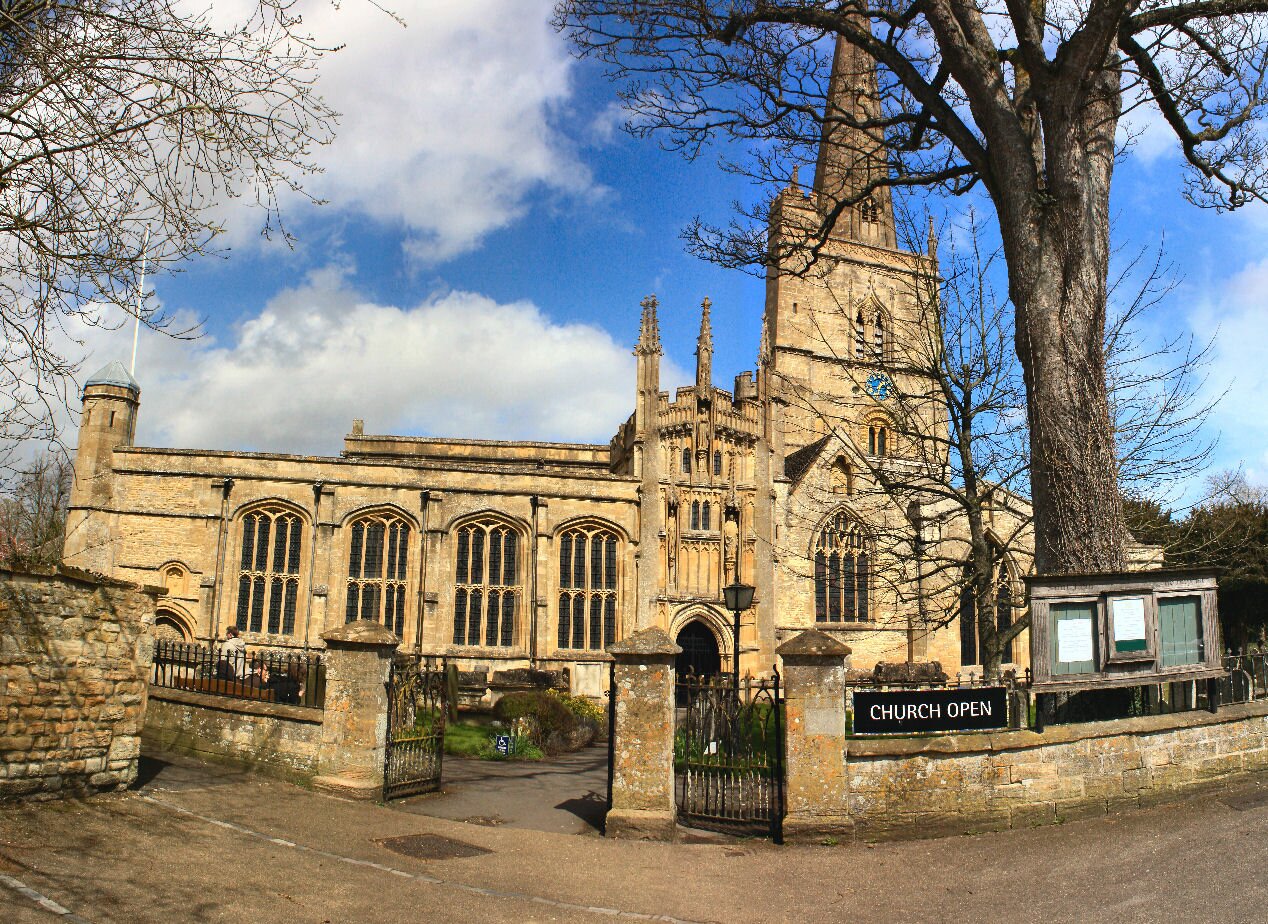
Below, plaque on the wall of Burford church remembering the executions, the men were buried in unmarked graves.

Below, one of the bullet holes.
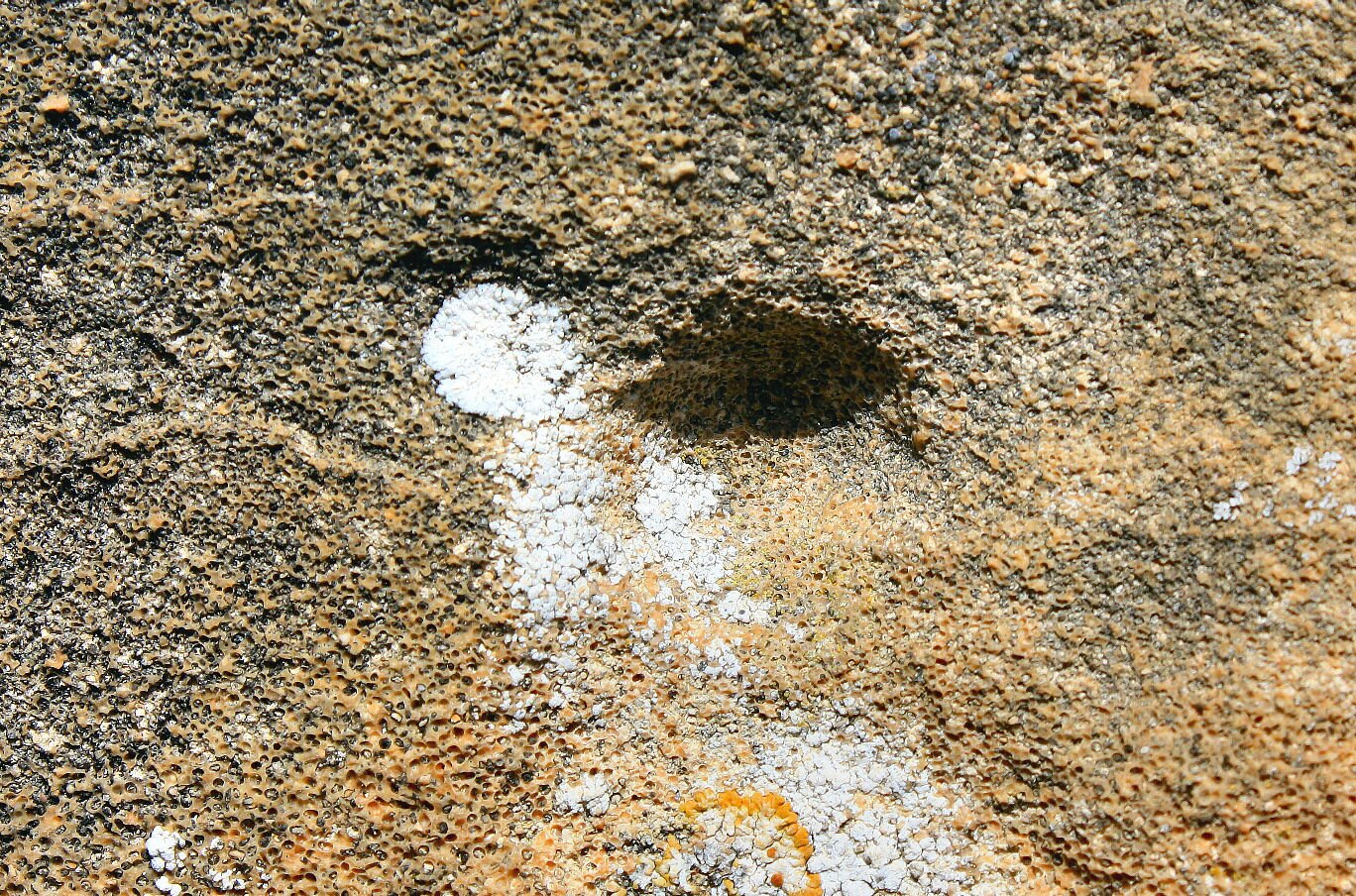
Denne left the Army shortly afterwards. Cromwell later dismissed 'Anabaptists' from the Army because of pressure from the Scottish Presbyterian (Calvinistic) government. Cromwell did not heed to pressure from the Scottish and English Puritans to clamp down on the church of Christ, who were allowed freedom to meet and evangelise.
To his friends Denne was known as either Cornet Denne or Parson Denne, depending if he was serving in the Army or preaching. So when he took his uniform off to preach he was "Parson Denne" and when his uniform came back on it was to his military title "Cornet Denne". So we known that Henry had a sense of humour amongst his other qualities.
During a debate with a Dr Gunning (St. Clement Dane's church, The Strand, London) which started after a lady showed concern with the practise of infant baptism during 1658 the following exchange took place; Dr Gunning, "Infants unbaptised where there is no desire of their baptism in their parents or friends shall be shut out of heaven." Denne, "If unbaptised infants be shut out of heaven, then God punisheth some creatures for that which they cannot help. Therefore unbaptised children are not shut out from heaven." Gunning, "I deny the consequence." Denne, "Then shutting out of heaven is no punishment". After this exchange the lady was baptised by Henry Denne. The previous year Dr Gunning had been arrested for celebrating Christmas with his congregation in St. Clement Dane's church. He was well known for his Anglican views, under Puritan rule.
Henry Denne preached and/or started churches of Christ at; Rochester, Chatham, Canterbury, Ely, Eltisley, St. Ives, Spalding, Warboys, Whittlesey and Peterborough.
The Congregation started at St. Ives, Cambridgeshire, by Henry Denne
During the 1650s Henry Denne and others started a congregation in the town of St. Ives, Huntingdonshire (Cambridgeshire). The St. Ives congregation was continued by his son John as the evangelist. Cromwell was born in Huntingdon, about ten miles to the west. This was Cromwell territory and for many historians it was here that the Free Church movement started. For a time Cromwell lived in St. Ives, 1631-1636. The tolerance shown by Cromwell to nonconformists, separatists and independents as they were called was considerable. At first the Church of England allowed the Gospel to be preached at it's church in St. Ives (All Saints). Believers were baptised for the remission of their sins in the river Ouse that flows past the building, shown below.
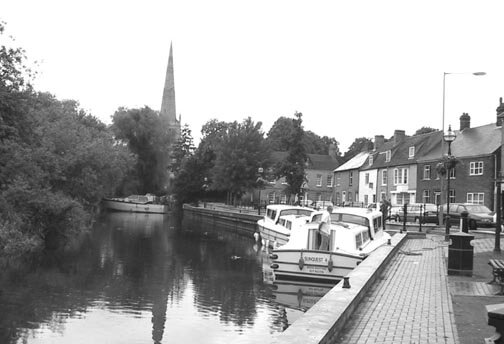
In the foreground is the River Ouse, in the back can be seen the spire of the Church building which saw the gospel preached in the 1650s.
Later a breakaway congregation was meeting elsewhere in the town. In 1672 the persecution from the Church of England was temporally ended when Charles 11 granted licences to dissenters to preach and to hold meetings, this though was for about one year when the CoE objected and had the old law reinstated. Meetings were held in the old Chapel during 1672 that still remains on the bridge crossing the river. The chapel first built by the Catholics in the 1420s, under the auspices of the Abbey at Ramsey, which was about twelve miles away. It fell into private hands after the dissolution of the monasteries under Henry V111 in 1539. After being forced to leave the chapel the congregation met in various houses. Later they joined with other groups in the town and have become part of the United Reformed Church.
The photograph below shows the old chapel where the church of Christ in St. Ives once met.
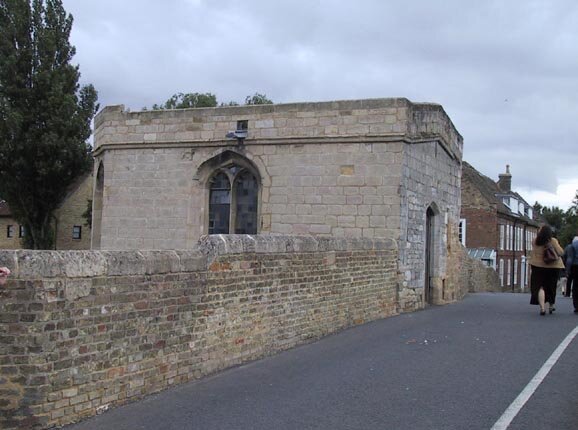
For more pictures of the Chapel and interior in colour click 'here'
For pictures of the Monksthorpe Meeting House built in 1701, a congregation which started much earlier and with whom bro. Denne worked, and the Lougton Meeting House (1653) please click here.
In the 1860s they joined with the Congregationalists/Presbyterians and built the Free Church building which is still in use. The photograph below shows the statute of Cromwell in the foreground with the Free Church in the background.
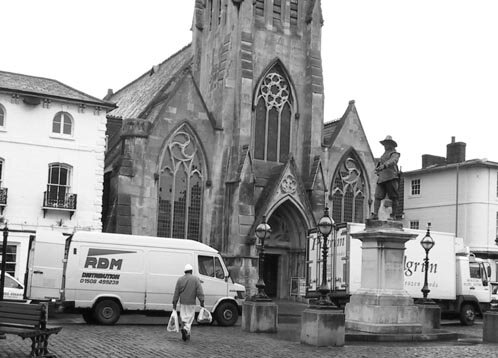
Lucy Hutchinson, the wife of Colonel John Hutchinson, Parliamentary Governor of Nottingham Castle during the Civil War, in her "Memoirs of the Life of Colonel Hutchinson", records how she and her husband came to adopt Christian views after reading literature confiscated from soldiers in the Castle. She speaks of the Presbyterian ministers being unable to defend the baptism of infants "for any satisfactory reason but the tradition of the church ... which Tombes and Denne has so excellently overthrown". It is to this Henry Denne, that the Baptist cause in South-East Lincolnshire is, to a large extent, indebted for its establishment. In 1645 John Tombes wrote to several churches of Christ in America, which is the next page.
In 1646 Denne preached several times in Spalding in the house of a merchant, John Makernesse. As a result four people were converted. Their names were, Anne Stennet and Anne Croft, who were servants of Makernesse, and Godfrey Root and John Sowter. It was arranged that these four should be baptised at Little Croft a few days later, the baptism to take place at midnight to avoid interference by the authorities. One of the women unwisely told a friend about the baptism who passed on the information to the magistrate. As a result Denne was arrested and, according to the historian Crosby, was committed to Lincoln goal.
The same magistrate was incidentally responsible also for the imprisonment of several other Christians. Nevertheless, in due course Spalding became one of the more important churches of Christ in the area.
In 1653 Henry was a member of the church in Fennystanton (modern day Fenstanton), which is about ten miles from Cambridge. He was taking part in a meeting during which he spoke, saying, "Brethren, I desire you to consider the Word of Christ, saying, Go ye therefore, and teach all nations, baptizing them in the name of the Father, Son, and Holy Spirit; teaching them to observe whatsoever things I have commanded you, and lo! I am with you always, even unto the end of the world (Matthew 28:19); which last words are often used by us, yet I think not too often. But I desire that we may seriously consider the former, viz., Go, teach all nations, baptizing them, &c. or as Mark saith, Go, preach the Gospel to every creature: and so, whether we are not as much bound to observe them as any. And if it appeareth that we are, then I pray consider whether we are not in a great fault, in being so negligent in sending forth persons to divulge the Gospel, in those many places that are ignorant thereof. Truly, I conceive that we are much to blame, and especially seeing there are many towns hereabouts that have no teacher; and who can tell but that the Lord may work in this opportunity."
The result was that Denne and another brother were sent out on a missionary excursion, an account of which was given to the church on their return. Next year he went again into Kent, and spent some time at Canterbury. The church at Canterbury had been established in about 1550, or before. His labours there were so acceptable that the church invited him to settle among them. The Fenstanton Church consented, appointed another brother to attend him on the journey, and "money and horses were provided for them." He arrived in safety, and was received with gladness. "He is provided of an house," the Canterbury Church said, in a letter to that at Fenstanton, dated February 19th, 1655, "and we doubt not of a comfortable being and subsistence amongst us."
John Bunyan, Henry Denne, controversy and the church of Christ meeting in Bedford.
John Bunyan (November 28, 1628 – August 31, 1688), a Christian writer and preacher for the Bedford church of Christ, was born at Harrowden (one mile south-east of Bedford), in the Parish of Elstow, England. He wrote 'The Pilgrim's Progress', arguably the most famous published Christian allegory. For some strange reason the Church of England, who imprisoned him for twelve years, Bunyan is remembered with a Lesser Festival on 30 August. Bunyan who preached against popish idolatry and worship of saints was given his own saints day! John Bunyan died, 60 years old, a year before William III came to the throne in 1689 and granted religious toleration to the 'Dissenters'.
Bunyan had clashed with Henry Denne, being to the left doctrinally to Denne. The church at Bedford became in time both liberal and infected with Calvinism. By trade Bunyan was a tinker, a trade of low regard. When visiting Bedford, a short distance from Elstow, he heard of the "new Birth" after hearing some ladies talking of sin. Some time later he was baptised, by immersion, in the River Great Ouse in 1653. In 1655 he became a deacon at the Bedford church of Christ and also began preaching. Bunyan to his credit opposed the new sect called Quakers, as did Henry Denne. In time the church at Bedford received into fellowship those baptised as infants and later, the church became congregational practising infant baptism. John Bunyan was not a Baptist and the church he was a member was not a Baptist church, but a church of Christ which in time fell into apostasy.
Before his final release from prison Bunyan became involved in a controversy with two theologians of his day: Kiffin and Paul. In 1673 he published his 'Differences in Judgement about Water-Baptism no Bar to Communion', in which he took the ground that "the Church of Christ hath not warrant to keep out of the communion the Christian that is discovered to be a visible saint of the word, the Christian that walketh according to his own light with God." While he agreed that water baptism was God's ordinance, he refused to make "an idol of it," and he disagreed with those who would dis-fellowship those who did not adhere to water baptism.
Bunyan also clashed with Henry Denne and later his son, John Denne over baptism.
There was though an occasion when Henry Denne came to the defence of John Bunyan. At this time Bunyan was a strong advocate of believers baptism. John Bunyan because he had never been ordained in the Church of England earned the derogatory nickname the "Tinker", due to his trade.
In May 1659 John Bunyan preached in the tithe barn (near the village green) of his friend Daniel Angier at Toft, near Cambridge. Known as the "tinker", Bunyan's "holy orders" and hence his right to preach were always being questioned. Thus when Thomas Smith (the Keeper of the University Library, Cambridge), "attracted by the sound of devotion" walked in on the service towards the end of the sermon there was bound to be trouble. Bunyan was preaching from 1 Tim. 4:16 and was actually stating that he knew most of his audience who were Anglicans were actually "unbelievers". When the preaching ended, Smith approached Bunyan and asked him what right he had to call the people of Toft "unbelievers" (half of whose faces Bunyan had never seen before).
Smith claimed that Bunyan was being uncharitable and as such was unfit to preach. Bunyan replied that when Christ preached from a ship to his hearers on the shore, he taught that there were four kinds of ground onto which the good seed of the sower fell and that only one of the four brought forth fruit. "Your position", said Bunyan, "is that he in effect condemneth the greater part of his hearers hath no charity, and is therefore not fit to preach the gospel." At this Daniel Angier rose to defend Bunyan and rebuke Smith, but Smith denied the layman's right to preach and asked Bunyan how he could answer the apostle's question "How shall they preach except they be sent?" Bunyan replied that the Church at Bedford had sent him, to whom Smith responded that the Church at Bedford, since they were only lay people, could not give the tinker that which they had not themselves.
Within a few weeks Smith had written and published a pamphlet entitled "A Letter to Mr. E of Taft (Toft) Four miles from Cambridge!. To which No Answer hath been returned". Mr E. is presumed to refer to Mr John Ellis Junior, son of John Ellis, the Anglican minister of Toft. The pamphlet begins:
Sir,
1. Since you had not so much patience as to hear me t'other day, nor would suffer your daughters to tarry, I now make use of my first hour of leisure to write to you part of that which you might have heard me speak then; Hoping that you and they (whom I look on as having more breeding than any other, his Auditors that I saw) will not believe this, whom his Friends generally call the Tinker, upon his bare word, but like those noble Bereans, Acts 17.11 with readiness of mind search the Scripture whether those things were so.
2. I guess at the breeding of most of his followers by this passage; one of them, viz. Daniel Angier (who invites him to that Town, entertains him in his house, lends him his barn for a meeting place) when I charged him in that place with maintaining that God was body, (viz. that he had hands, feet, a face, &c. Like one of us) saying that he contradicted me in my Churchyard, after I had preached people when he saw his Ring-Leader T. would not defend it, that I lyed; whereas my whole Parish are ready to witness the truth of what I said.
3. But to the purpose, I shall in this paper follow that method which the T. commanded me (though I desire the contrary) shewing first his false doctrine and then prove 'tis a dangerous sin in him to preach (as he did publickly) and in the people to hear him...
All this your tinker hath been guilty of, and much more, for he hath intruded into the pulpits in these parts, and caused the people of your town to hate their lawful minister, but (as he told me) encouraged them to proceed as far as to cudgel him and break open the church doors by violence...
Smith concludes:
And now, sir, let me beseech you for God's sake, for Christ's sake, for the Church's sake, for your reputation's sake, for your children's sake, for your country's sake to consider these things sadly and seriously, not to think a thinker more infallible than the pure Spouse of Christ, and to foresee what will be the sad consequences both to the souls, and bodies, and estates of you and your children in following such strangers.
The pamphlet is written from "Caucat" (i.e. Caldecote) and dated May (1659). Caldecote is less than two miles from Toft.
Bunyan himself does not seem to have replied to this pamphlet, but there was a response from Henry Denne, who was a friend of Smith. Having known him at Cambridge University. For in a work known as The Quaker No Papist (London: Francis Smith, 1659) Denne wrote:
"You seem to be angry with the tinker because he strives to mend souls as well as kettles and pans. The main drift of your letter is to prove that none may preach except they be sent. Sir, I think him unworthy of the name of a tinker that affirms that any one is sufficient to preach the gospel without sending. By your confession the tinker thinks otherwise, and doth not deny what you labour to prove, and so you contend with a shadow. He proves his mission and commission from the Church at Bedford, you should also have proved that Mr. Thomas Smith hath a better commission from some other Church than the tinker either hath or can have from the Church at Bedford. You must give me leave to propound something for your consideration: Some shipwrackt men, swimming to an island, find there many inhabitants, to whom they preach; the heathen hearing are converted, and walk together in love, praising the Lord; whether the preaching of these shipwrackt men were a sin? Secondly whether it be not lawful for this congregation to chuse to themselves pastors, governours, teachers, &c. ? Thirdly, whether this congregation may not find some fitting men full of faith and the Holy Ghost to preach to other unbelieving heathen?"
Two views of the jail.
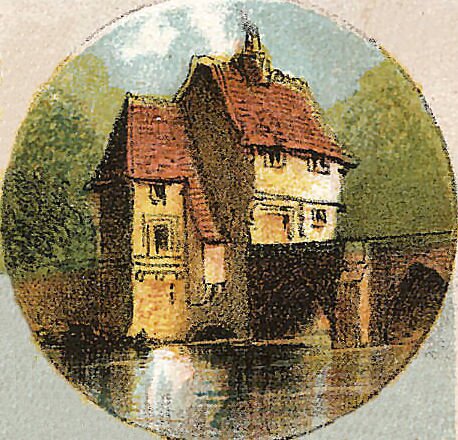
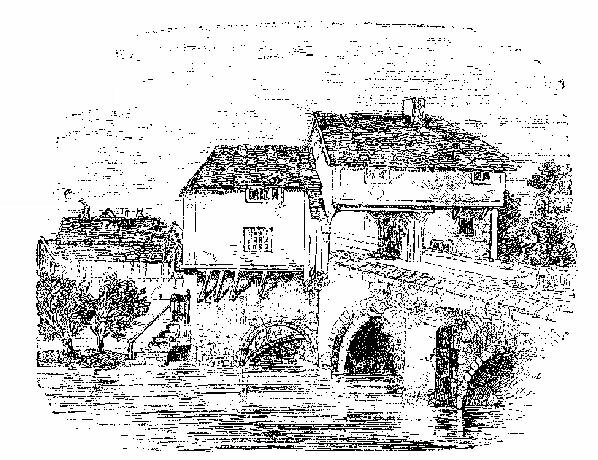
The jail at Bedford which was built on a bridge over the river Great Ouse, the same river Bunyan was immersed in. It was from the jail Bunyan wrote Pilgrim's Progress. A new bridge was built in 1813.
John Bunyan's cottage at Elstow, a mile or so from Bedford.
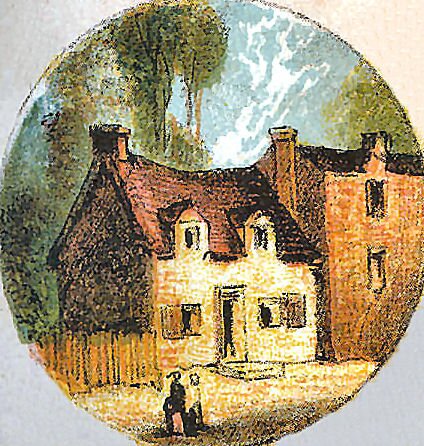
In 1643 Benjamin Cox, a Church of England's Bishop’s Son, and preacher of the church of Christ at Bedford, was sent to jail for preaching against infant baptism at Coventry after a debate with the Presbyterians. Who won the debate we do not know, but the Presbyterians having initially encouraged the debate called for the constabulary and had Benjamin Cox arrested, which finished the debate! He was ordered to leave Coventry, he refused to go, and was promptly sent to jail but he was released shortly afterwards. It was this church that later John Bunyan would become the preacher.
Today the church at Bedford is a Free Church, and is named after Bunyan - 'Bunyan Meeting Free Church'. The original church was named after Christ - The church of Christ, Rom 16:16.
Henry Denne died during 1661. Upon his grave was written the epitaph by a close friend:
To tell his wisdom, learning, goodness unto men,
I need to say no more,
but here lies Henry Denne
His son John Denne started to preach the Gospel first from his house in Wilbraham, Cambridgeshire in 1675. He was once fined for preaching, but unlike his father his views became more in line with the newly forming General Baptist Denomination (which opposed Calvinism). Henry Denne views developed towards Calvinism as the doctrine came into the church but whether he was Calvinistic at his death I'm uncertain. By the 1650s we have the old Churches of Christ who were dwindling. The Quakers who came out of them and the newly forming Calvinistic Churches who would in time form the Baptist denomination. It is certain from the mid 1640s the Church was being ripped part with error (Calvinism and Quakerism). Those congregations whom Henry Denne associated with were opposed to Calvinism, though in the later 16050s some were heading towards that pernicious doctrine and by the 1660s were Calvinistic. I guess by that time the 'old school' was dead, the older preachers and brethren who objected to and fought against error having passed away and new innovations were entering. There is a thirty year period, from about 1635 when Calvinism is virtually unknown in the church to 1665 when it is becoming predominate. By 1689 it denominates itself as the Protestant Baptist Denomination and ceases to evangelise. Some, a few congregations survived this period of persecution, turmoil and error. By the 1690s there is a clear distinction between beliefs. The lesson for us today is to keep error out of our pulpits, it takes two to bring in error, those promoting it and those prepared to receive it. 2Ti 3:13 "But evil men and seducers shall wax worse and worse, deceiving, and being deceived."
Some would have Henry Denne a Baptist, as the Baptist denomination and its offspring did not exist in this period as such, he was not a modern Baptist. It is true when he joined the Church it was far stronger than when he passed away. What his legacy is can be argued, did he introduce Calvinism into the congregations where he preached? Could he not throw Calvinism off when he joined the church and hence was influenced by it? Did he in later life turn back to Calvinism? What we do know is that for fifty years it was a time of devastation for the Lord's people, starting in the mid to 1630s through to the late 1680s when the church pretty much ceased to exist. It was not persecution that near destroyed the Church, but error in the pulpit.
Henry Denne wrote at least seven books or tracts including;
1. The Doctrine and conversation of John the Baptist, 1642, (This book has survived and a copy can be found at Cambridge University Library).
2. The foundation of children's baptism discovered and raised; an answer to Dr Featly and Mr Marshal, 1645.
3. The man of sin discovered whom the Lord will destroy with the brightness of his coming, 1645.
4. The drag-net of the kingdom of Heaven; or Christ's drawing all men, 1646.
5. The levellers design discovered, a tract, 1649.
6. A contention for Truth, in two public disputations at St. Clement's church between Dr Gunning and Henry Denne concerning infant-baptism, 1658.
7. Grace, Mercy and Peace.
In 1645 John Tombes wrote to several churches of Christ in New England, America. Click on logo below for the next page:

If you have arrived here from elsewhere, you can reach the introductory page - Traces of the Kingdom by clicking the logo below:








